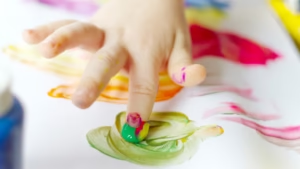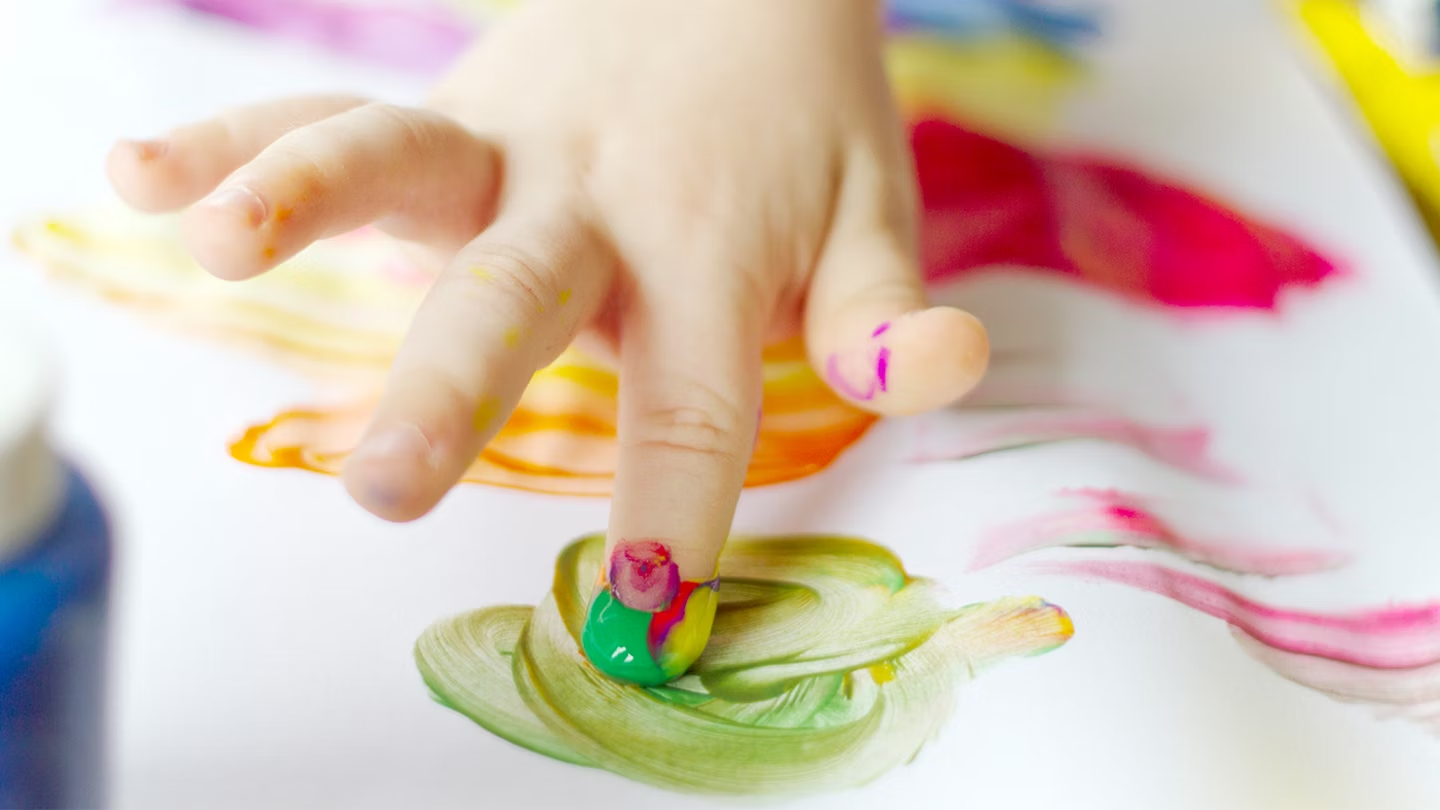A crucial aspect of a baby’s development is sensory play activities . Babies start using their senses—taste, smell, sight, hearing, and touch—to explore the environment as soon as they are born. These encounters set the stage for language development, motor skill improvement, and cognitive progress. Sensory play activities only needs to be age-appropriate, safe, and entertaining; it does not need to be elaborate or costly. Try these ten easy yet engaging sensory play exercises with your baby (0–12 months). 1. Texture-Based Tummy Time Age range: 0–6 months Place a soft blanket on the floor and wrap your infant in a variety of textured materials, such as terry cloth, silk, and cotton. Their tactile awareness will be improved when they experience the difference in textures as they raise their head and push with their arms. Guidelines: To avoid choking dangers, use large pieces of fabric and provide close supervision. 2. Using Warm and Cool Bowls for Water Play Age range: 6–12 months Pour warm water into one shallow bowl and chill water into the other. Allow your infant to feel the difference by dipping their hands or feet into each. Why It is Great: Improves touch sensitivity and fosters an early grasp of temperature. Safety Tip: Stay away from extremely hot or cold water and always keep a close eye on things. 3. Books and Cards with High Contrast Age range: 0–4 months High contrast colors, particularly black and white, are ideal for newborns’ vision. To promote visual tracking and focus, show them books or flashcards with great contrast. 4. Examining Crinkly Paper Age range: 3–8 months Give your infant crinkly wrapping paper or clean, non-toxic tissue to hold and crumple. For small hands, the sound and feel are thrilling. Pro Tip: Crinkly toys designed specifically for this use are also available; they work well in car seats or strollers. 5. Finger Paint That Is Edible Age range: 6–12 months Let your infant “paint” on a highchair tray by mixing plain yogurt with a small amount of natural food coloring. It is enjoyable, messy, and very safe to taste. Developmental Benefit: Promotes artistic expression and awakens the senses of taste and touch. 6. Discovery bottles, also known as sensory bottles Age range: 4–12 months Stuff safe, eye-catching things into plastic bottles, such as pasta, glitter, colored water, or even beads. Use tape or glue to firmly seal the lid. Activity Idea: To engage the senses of hearing and sight, shake, roll, and move the bottles. 7. Exploration Basket for Soft Toys Age: 6–12 months Put together a basket filled with a variety of soft, baby-safe toys in a range of textures (rubbery, ribbed, plush). Allow your baby to reach in, grab, and investigate. Why It Works: Promotes the development of fine motor skills and presents the concept of cause and effect. 8. Age range for Mirror Play: 3–9 months Babies adore observing faces, even their own. During tummy time or by their cot, place a baby-safe mirror on the floor. Benefits: Promotes early social-emotional awareness and aids in visual recognition. 9. Age range for bubble play: 4–12 months Watch your infant reach, gaze, and chuckle as bubbles float and burst when you blow them. For babies, this easy game is enchanted. Hand-eye coordination, visual tracking, and sensory stimulation are among the skills that were developed. 10. Rhythm and Music Age Range: 2 to 12 months To add rhythm and sound, shake a rattle, sing songs, or play gentle music. Allow your infant to talk or move. Try using a toy drum or keyboard.

